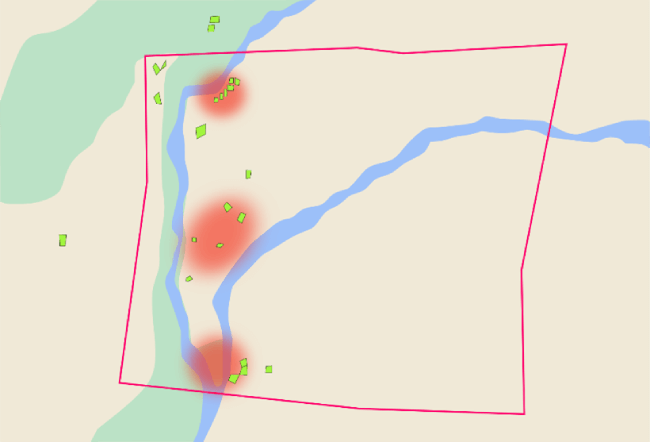NEC & Red Cross Develop AI Tool to Predict Landmine Locations: How Will It Help War-Torn Countries?
In The News | 03-04-2023 | By Robin Mitchell
Recently, NEC and the Red Cross have co-developed an AI tool that can predict high-risk areas for landmines, a crucial step in helping war-torn countries such as Ukraine demine and prevent civilian casualties. With the ability to detect hidden and scattered explosive weapons technologies, including metallic and plastic mines, this tool will assist explosive experts in identifying danger zones such as choke points and heavy traffic areas, with the support of satellites and remote sensors, ultimately providing governments with invaluable information to protect innocent civilians, particularly children. What challenges do landmines present, what did the NEC and Red Cross develop, and how will such tools help warn-torn countries such as Ukraine?
What challenges do landmines present?
Throughout human history, war has played a key role in the development of civilisations. Historically, humans have warred over religion and resources, and a few have even warred over grudges. Losing a war and being conquered has almost never been beneficial for a society, which is why large amounts of resources have been devoted to developing new technologies capable of winning wars. Some of these technologies will be directly related to new methods of killing (whether it’s a sharper, stronger sword, or a more powerful cannon), methods for preserving the lives of soldiers (such as medicines), and even indirect technologies that can improve the security of a country (such as new farming techniques). In fact, a large portion of modern life owes itself to the many technological developments directly funded by militaries.
However, there exist some weapons technologies that are particularly problematic, and landmines generally stand above the rest. Unlike most other weapons, which are pointed at the enemy and fired, landmines are hidden from sight and scattered across vast areas to deny the enemy from safely moving through areas. Such mines do not emit any kind of tracking signal, they are not painted in high-vis colours, and many mines have even been designed to be completely hidden from modern detection systems, including metal detectors.
While this makes landmines effective against enemy forces, their inability to distinguish friend from foe means they will hurt anyone, even civilians, who encounter them. Worse, the soldiers that lay mines will rarely write down the exact location of each mine, meaning that there is no written record for a future crew to demine areas. This means that entire areas that have been mined can remain dangerous even after a conflict is over. In some cases, militaries will scatter landmines from planes to maximise the coverage area, with one cruel example being the Russian butterfly mine.
Finally, landmines can remain dangerous for extremely long periods of time as explosive compounds do not become inert after a few years. In fact, explosives from the first world war are still routinely found in Europe and can detonate. So, landmines are dangerous for many years, hard to find, and cannot distinguish friend from foe.
NEC and Red Cross develop AI tool to predict landmine locations
When trying to determine an area, explosive experts need to sweep every inch of ground, trying to find signs that a mine may be present. Mines that contain metallic components can be detected with metal detectors, but all-plastic mines are more challenging to spot. If these mines are missed, then either the operator can be wounded or civilians after the area has been cleared.
Recognising the challenges faced with landmine removal, the NEC Corporation and the Red Cross have recently worked together to co-develop an AI tool that is capable of predicting the location of landmines. To develop the tool, researchers trained an AI to learn where landmines are frequently used, taking into consideration areas of key interest, areas of heavy traffic, and choke points in access (such as narrow river crossings).

Before using the AI tool to predict mine burial locations (indicated by red circles), the designated area was identified with a red square frame for comparison with actual locations (shown as yellow-green dots).
Red areas show predicted landmines, while green shows the actual location of mines
The resulting AI was able to predict the rough location of landmines with a 90% success rate. It is hoped that the use of this tool will allow explosive experts to focus their attention on key areas that will likely have landmines as well as likely see heavy traffic from civilians after the fact. The researchers will continue to improve the AI tool by feeding in data from satellites and remote sensors and eventually release the tool for use with governments and institutions around the world.
How will such tools help war-torn countries?
While many places around the world have issues with landmines, Ukraine is one country that will significantly benefit from such AI tools. The large-scale nature of the Ukraine-Russian war, combined with the mass use of land mines, will make Ukraine particularly vulnerable, especially after civilians try to re-occupy areas taken by Russia. As the border between Russian-occupied regions of Ukraine and Ukraine forces is extremely long, trying to demine this entire stretch of land will be a monumental task. As such, AI tools developed by the NEC and the Red Cross will undoubtedly help to secure Ukraine’s future as a safe country to live in.
Of course, it’s not just Ukraine that can benefit from these tools; any area that has experienced war where land mines have been used can also use this tool. While there’s no question that all lives matter, it is generally accepted that the harm and damage done to children by land mines Is horrific on another level. As such, these AI tools capable of detecting the position of land mines would not just be saving the lives of soldiers but also the children of the future.

